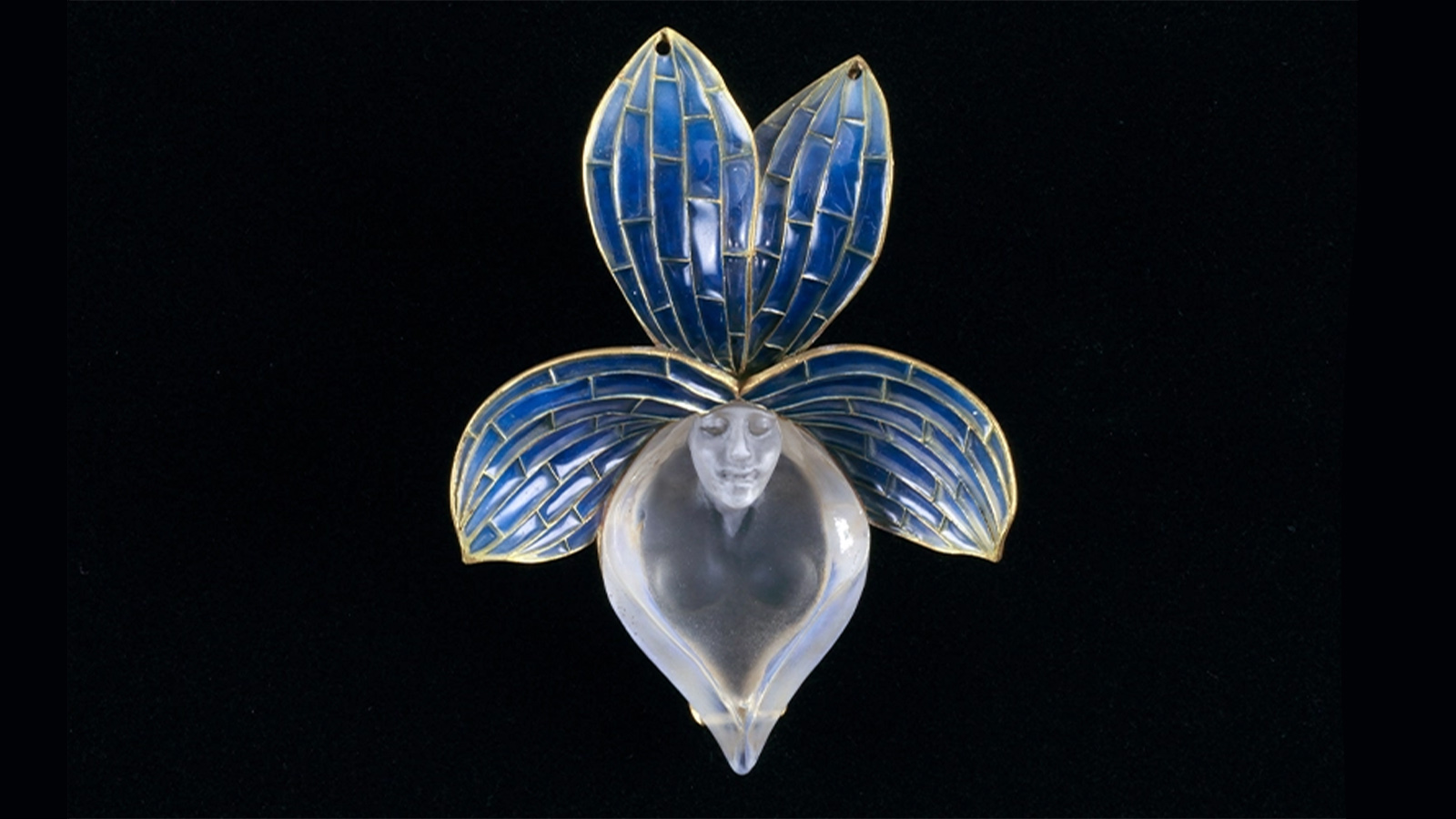René Lalique and the Woman-flower
René Lalique (1860–1945) and Calouste Sarkis Gulbenkian (1869–1955) probably met in the mid-1890s, through the actress Sarah Bernhardt, a great admirer of the artist.
Their friendship would develop over the course of fifty years, with the collector buying almost all of the hundred and seventy-five objects (with just one exception) that now belong to the Calouste Gulbenkian Museum directly from the artist, between 1899 and 1927.

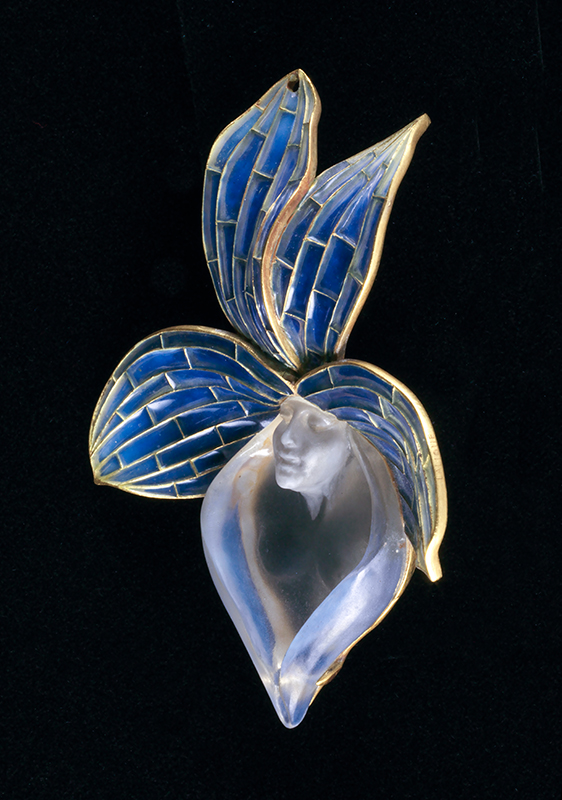
An undeniable source of inspiration in René Lalique’s work, totally inspired with the spirit of the Art Nouveau style, the obsessive image of the female form was simultaneously the subject and object of some of the artist’s most daring creations.
This period, which spanned from the 1890s to the 1900s, and which corresponded with the golden phase of his jewellery production, coincided, not by chance
Within the vast universe of female imagery ever-present in the artist’s work – of which the Dragonfly corsage ornament, the representation of a hybrid woman/insect figure, is his absolute triumph –, the specific theme of the woman-flower, so important to the poetry of the time, also marked Lalique’s creative originality in a decisive way.
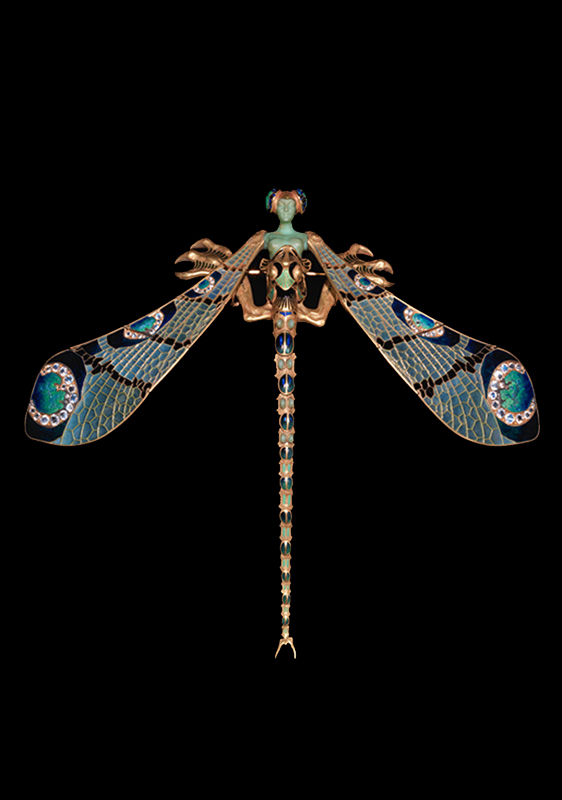
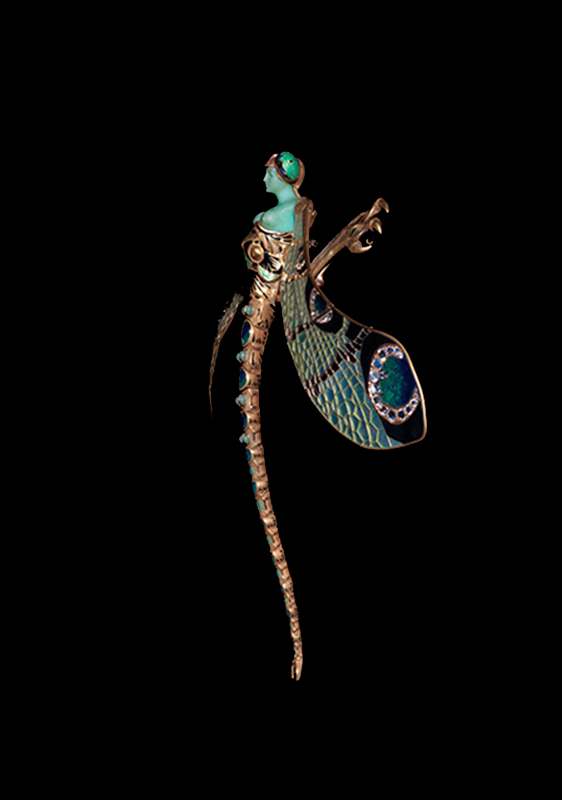
The Female Face pendant (inv. 1141) features a centrepiece moulded in opalescent glass and a hanging baroque pearl of Renaissance influence. The face is surrounded by four open poppies in patinated silver, an emblematic flower in the Art Nouveau period whose symbolism is associated with the dream world.
The Orchid pendant, a symbol of beauty and fertility, formed of four petals in vitreous enamel and a fifth petal featuring a moulded female face in iced glass, embodies the motif of the eternal encounter between the woman and the (blue) flower and the metamorphosis that results from this assimilation, in this case a romantic reference to the German poet Novalis.
Thus, we find ourselves before a unique moment in Lalique’s work, where, in 1895, as he mentioned to jeweller Henri Vever, he designed ‘quelque chose qu’on n’aurait pas encore vu’ [something never seen before]1.
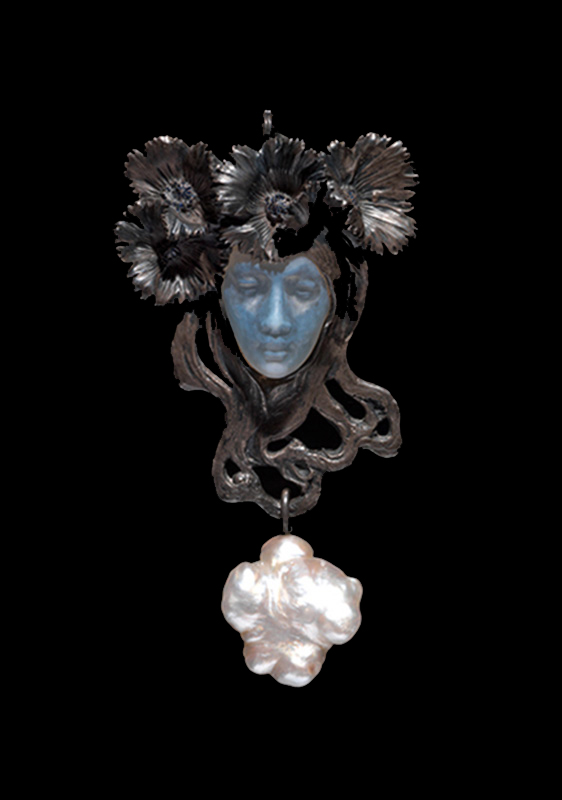
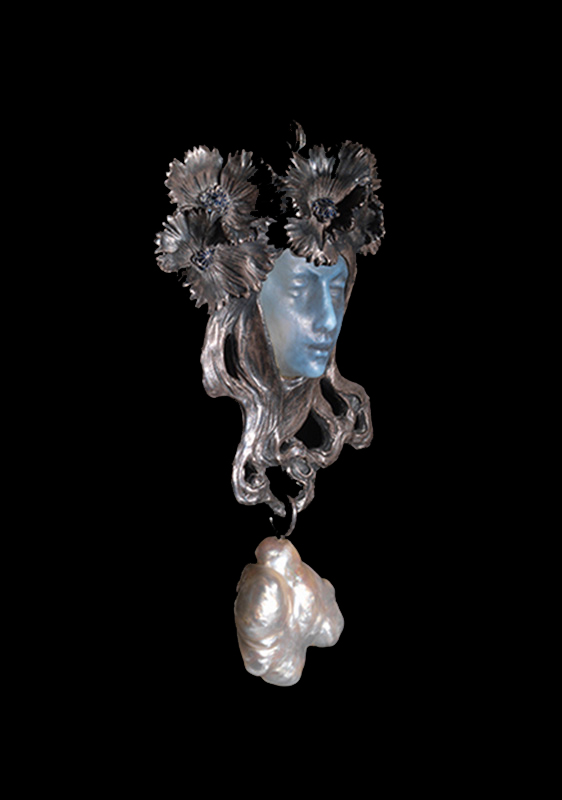
We can conclude, therefore, that his female representations belong to a world where, as has been said before, everything is reference and correspondence, echo and response, a world where ‘le labyrinthe de “l’œuvre d’art totale” commence partout et toutes les entrées sont legitimes’ [the labyrinth of the total ‘work of art’ begins everywhere and all entrances are legitimate]2.
1 Henri Vever, La bijouterie française au XIXe siècle (1800-1900), Paris, 1908, p. 710
2 Claude Quiquer, Femmes et machines de 1900, lecture d’une obsession, Paris, 1979, p.20.
